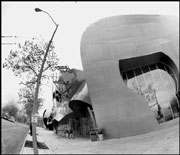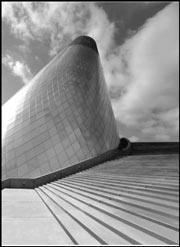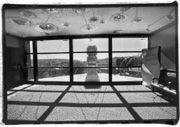JUST HOW BIG is that cost overrun that the Mariners don’t want to pay?
Well, it depends on when you want to begin counting. If you start in December 1997, when the Mariners unilaterally rewrote their pending lease after threatening to sell the team, the overrun is a mere $100 million. At that time, the new $417 million budget figure looked like it couldn’t be reached, much less exceeded. The number seemed to be set that high to ensure that the Mariners would be in no danger of paying for overruns.
But along the road to that benchmark, there were other figures: $405 million, $384 million, $364 million, and the seemingly definitive $320 million appropriated by the state Legislature. If you go back to the original estimate that came out of the county’s Stadium Alternatives Task Force in 1995, it’s $200 million to $250 million. So, the overrun ranges from $100 million to $317 million, or between 24 percent and 158 percent.
There are many reasons why Seattle holds the record for baseball stadium costs, but most of them boil down to choices made by the M’s. They insisted on a breakneck design and construction schedule, which made for tremendous waste, and they mandated high overtime and second-shift premiums, not to mention expensive change orders. The M’s wanted a retractable roof—an absolute nonnecessity, since Seattle gets less rain during baseball season than any major-league location outside of California and Arizona. The roof and all its related components cost between $70 and $90 million, depending on which architect you ask. In the project’s infancy, an experienced roof consultant said that it would cost $35 million—so the roof alone represents an overrun of between 100 percent and 157 percent.
The Mariners didn’t do all the homework expected of clients. When the project started, they seemed uninterested in stating their program requirements to the architects in a timely manner. Along the way, they kept changing their mind about those requirements. The most spectacular example was their insistence on extensive on-premises cooking capabilities (rather than simple warming and holding equipment) after construction was well under way. They also increased the size of the garage, the scoreboard, and the entrance rotunda—all major cost items.
The M’s wanted a site distant from Pioneer Square, rather than the north Kingdome parking lot, in order to create a captive market and maximize their food, drink, and merchandise revenues. Their preferred location was too small. It required purchasing a city block of business properties, relocating those operations, vacating a street, rerouting a major trunk-line sewer, and disposing of large quantities of contaminated soil. The relative costs of using these two sites were never systematically explored; the Mariners’ desires carried the day.
JUST HOW MUCH will it cost to see a game?
The average Safeco Field ticket price is said to be $18. But weighing the actual number of seats in each price category yields an average of about $23.50. Frugal fans can park remotely, pack their own food and drink, and sit in the center-field bleachers for $5. High rollers can use the Mariners garage, come in through a private entrance, sit in the first row of the Diamond Club, and enjoy a free meal served at their seat, at a total cost of $207. But that’s really a total of $32,562 for the year, since these seats are sold only in pairs and on a full-season basis. Moderates can park in a cheaper lot, sit in the lower-deck outfield corner for $25, and pay another $17.50 for a jumbo dog, a bottled beer, a scorecard, and a box of Cracker Jacks, shelling out about $50 altogether.
A sold-out game could thus yield approximately $1.1 million in ticket revenue, and perhaps $400,000 more in concession sales, parking, and prorated ads and sponsorships. If the Mariners sold out every game over a full season, they would take in about $125 million, including non-game-day revenues. More realistically, by averaging 40,000 in attendance in their 47,000-seat park, they would gross about $110 million in stadium-generated revenues, or about $1.35 million per game. Of course, the Mariners also have non-stadium income, local and national broadcast fees being the most significant.
At these projections, the M’s would pay approximately 0.4 percent of their total revenues to the county for rent: $700,000 a year, or about $8,600 per game. (This will be adjusted for inflation in future years.) They won’t pay a nickel for post-season games, or for staging non-baseball events. The team will also pay for maintenance, which it claims will be $10 million to $12 million per year, or about twice what the city of New York pays to maintain two older and larger major league ballparks.
John Pastier is a Seattle architecture critic. He has held an NEA fellowship for ballpark design research, and has consulted on the design of six stadiums and arenas, including Safeco Field and Camden Yards.







